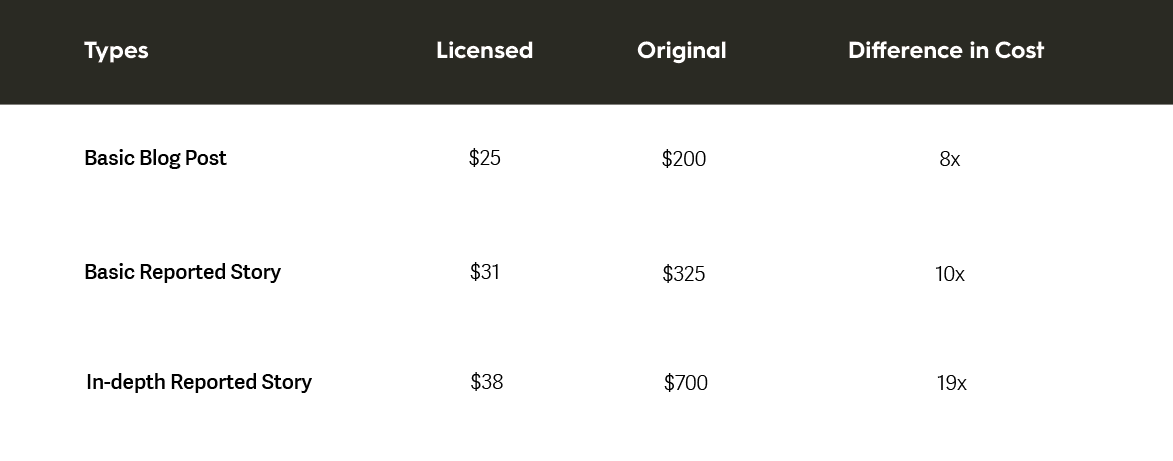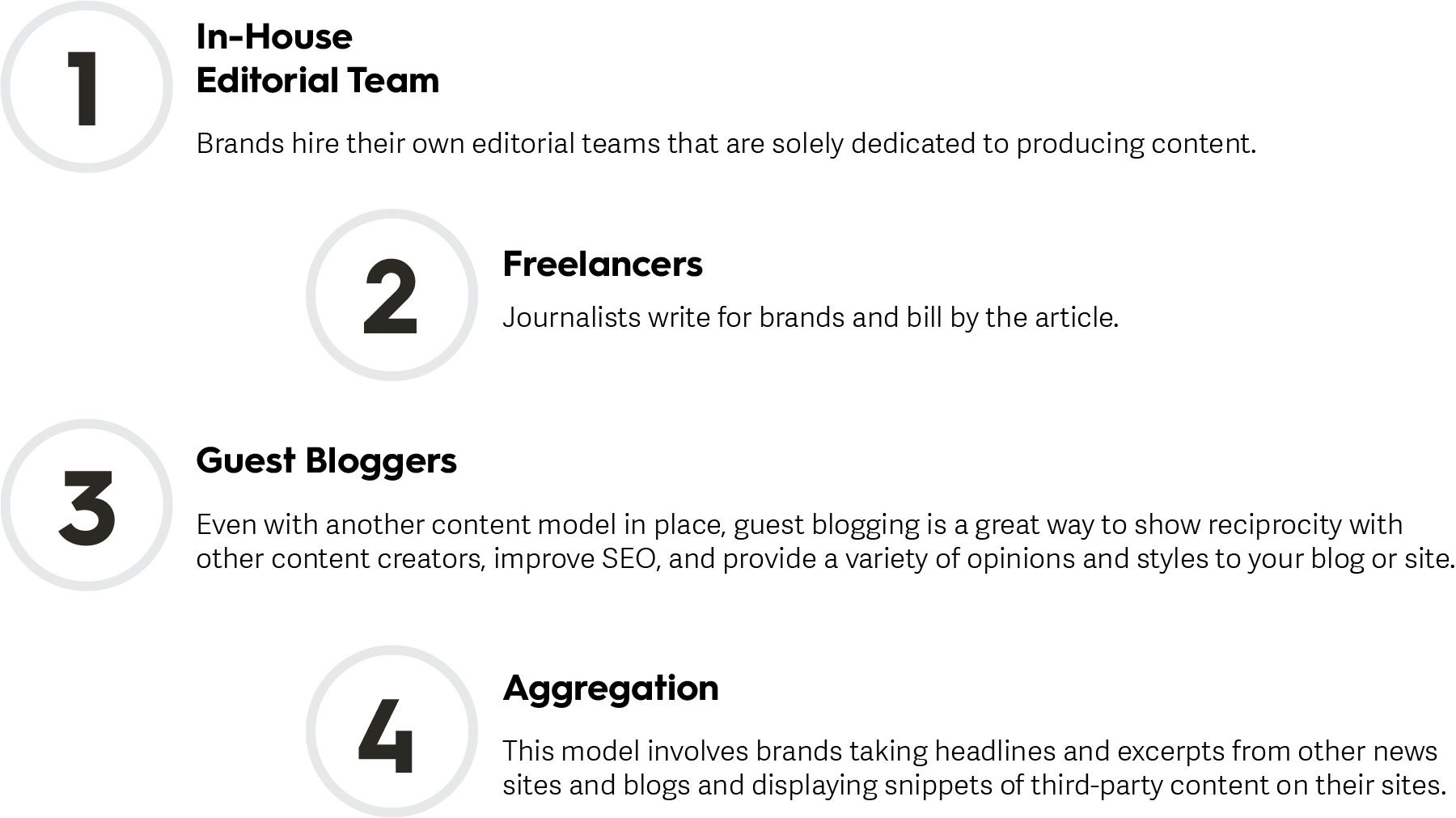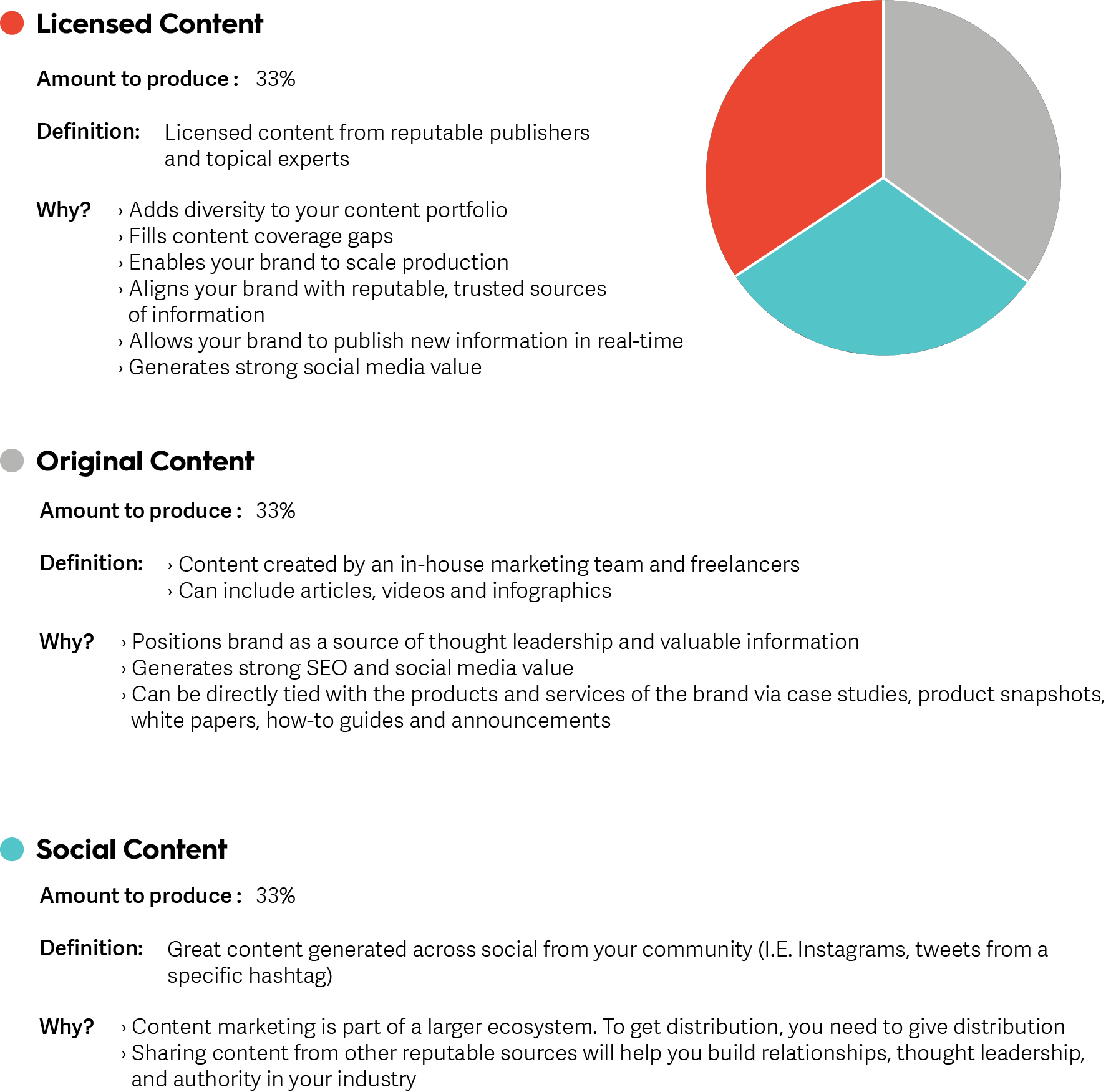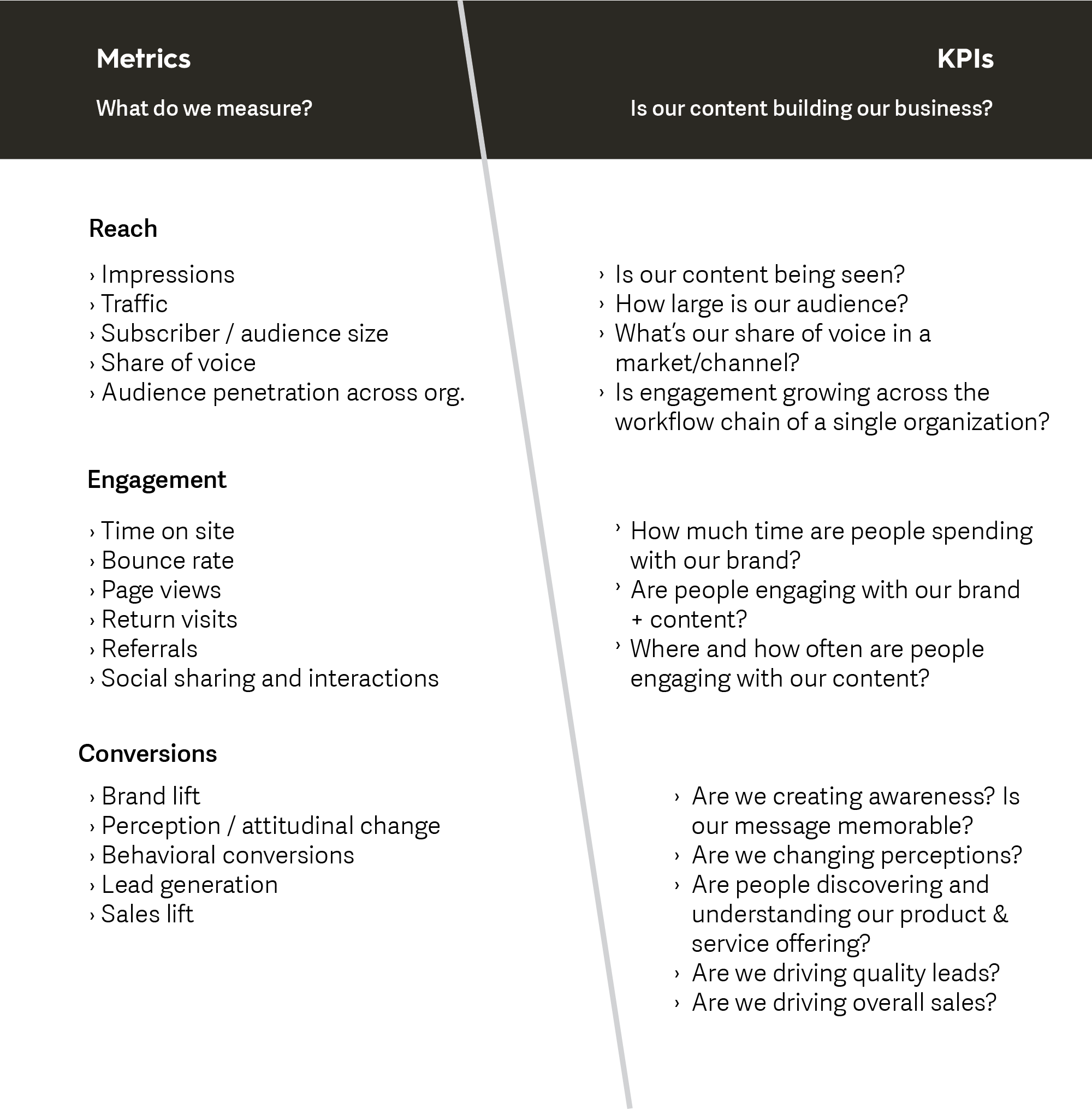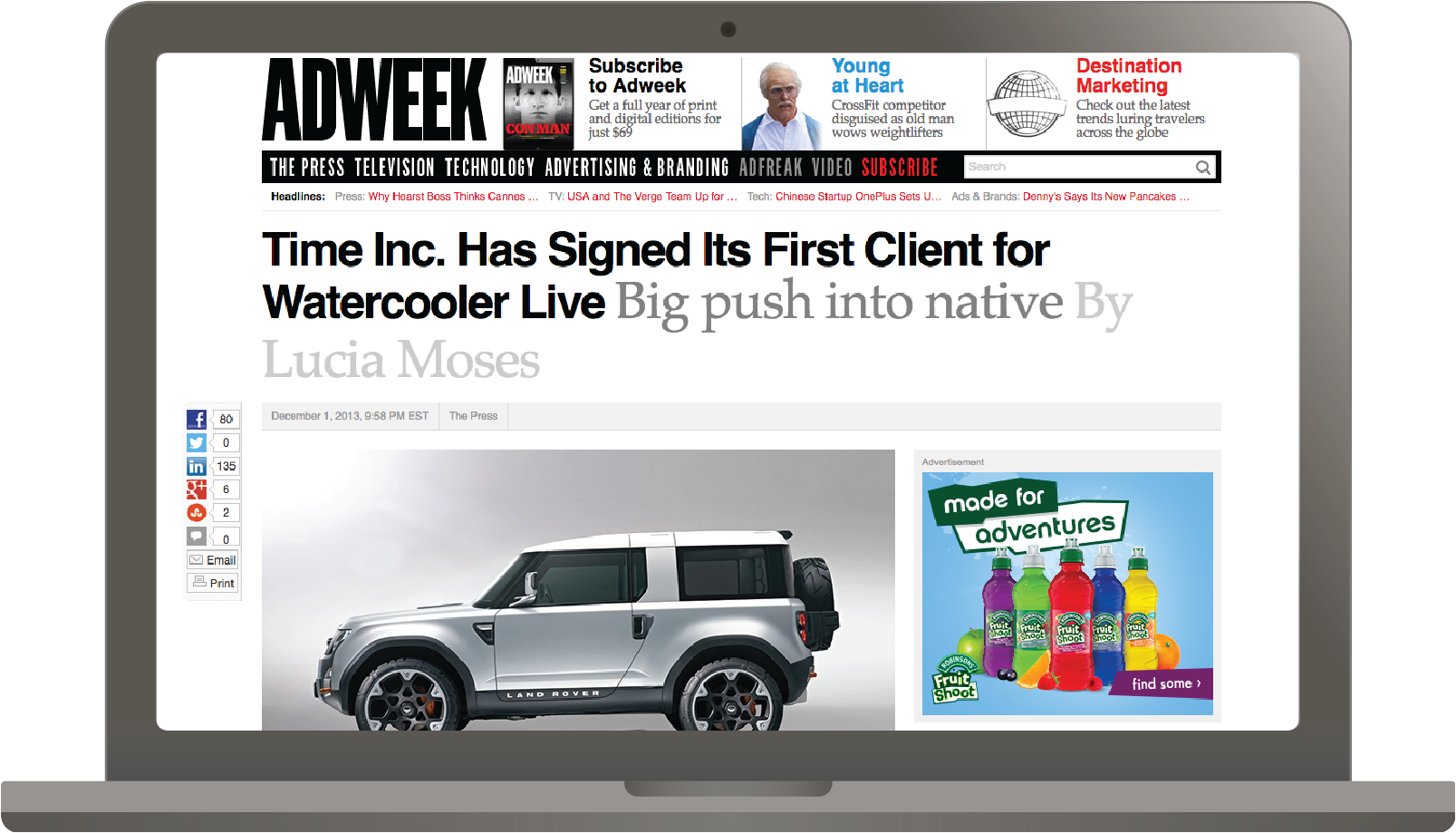[ad_1]
Content licensing Basics
Content licensing is a practice that stems back to the earliest days of online media. You’ve probably seen it happen with television, newspapers, and magazines. If you’ve ever purchased a stock photo, for instance, you’ve purchased a license to use that content. Even though you are not the original content creator, you are legally able to license that material in your own marketing projects. The same concept carries over to article and video content.
Content licensing is a legal agreement between two parties known as licensees and licensors. Licensees can purchase the rights to republish content from a licensor. Licensing is extremely versatile and allows brands to repackage content into a variety of forms across desktop and mobile platforms.
Case Study: Blue Cross Blue Shield
Image: Blue Cross Blue Shield
With curated articles from CNN, HealthDay, and The Washington Post, Blue Cross Blue Shield delivers daily trending health news on the issues their customers care about most. An interactive feature, the YouBar, allows patients to drive their experience, toggling between topics like Fitness and Preventative Health. Blue Cross Blue Shield BC/BS Alabama licenses 12 articles daily, from which they can handpick the most current and relevant to distribute to customers and visitors. Since relaunching the Blue Cross Blue Shield Alabama site with content licensing, monthly page views have increased by 287% and unique visitors have increased by 1776%.
Content Licensing Law
One of the core benefits of content licensing is that it is 100% compliant with the law. Licensors and licensees sign a written agreement that clarifies ambiguities and protects the two parties from potential litigation.
This protection is especially important in online media, where copyright laws can sometimes feel like a gray zone. Many times, marketers will republish content without even realizing that they’re exposing themselves to liability. In the past, the rule of thumb was that using a headline and first 300 words of an article was fair use. This is a myth as often the entire article could be 350 words long.
In the Harper & Row case in 1985, The Nation magazine reviewed Gerald Ford’s memoir and only used 300 words of a 200,000 word book. Using headlines and lead-in text is widely practiced, but courts have yet to definitively rule on the legality of it. Websites can receive takedown requests for this same practice. The Internet may be a new multimedia channel, but copyright laws are timeless.
Content licensing ensures that your brand repurposes full-text articles and videos ethically and legally. It is the only way to avoid the risk of a lawsuit, takedown order, or fine that could severely impact your brand reputation, industry relationships, and customer operations.
Content Licensing Benefits
Content licensing can add significant value to your company’s brand strategy. When starting out with content marketing, brands are typically building their reputations and content inventory from the ground up. Content licensing can help accelerate this process by allowing brands to instantly access a high volume of articles and videos from trusted publishers. Here is a breakdown of some of the key benefits of content licensing:
- Trusted sources bring balance and credibility to content marketing campaigns. Anyone can write a blog post about how great a product or company is, but in today’s culture, where anyone with a computer can produce content, consumers are naturally skeptical of what they read. According to a study conducted by UCLA and HP, content source is the number one predictor of social sharing. In other words, an article from a trusted source will travel farther than a random blog post. Licensing allows companies to align their brands with publishers like The New York Times, Forbes, Bloomberg, and The Washington Post.
- Licensing helps brands scale their content marketing campaigns to the pace of the web. As online social interactions continue to accelerate, brands need to be able to keep up with the volume of content that others are producing and that readers want to consume. Licensing reduces the reliance and workload on a brand’s newsroom. Content marketing campaigns can be executed quickly and can adapt in realtime to events as they happen.
- High value content lives all in one place. A distinguishing feature of the content licensing model is that videos and full-text articles live on your site. When a user engages with an article on your site, they don’t have to click away to keep reading the article on the publisher’s page. This also allows you to push content on your social channels that drive straight back to your site. Ultimately, the results are more site traffic, more qualified leads, increased search engine visibility, and greater ROI.
- You get more bang for your buck. Compared to original and aggregated content, content licesing is much more cost-effective for brands. Original content produced in-house or by freelancers is a valuable part of a brand’s content marketing equation, but it is also costly and time-intensive. By balancing original and licensed content, you can ensure your content pipeline is fully loaded. Without content licensing, it may be impossible to afford a significant scale. By licensing content and hosting it on your content portal, you’re able to keep users engaged on your website, longer by offering a larger variety of content.
- It benefits the journalism industry. The journalism industry has been disrupted by the digital revolution and many traditional publishers have resorted to massive layoffs, cutbacks, and reduced publication frequency. Publications that license their content can generate additional revenue each time a brand licenses it. The licensing model is helping to reinvent the business model for news and keep high-quality sources afloat.
Getting Started with Content Licensing
Content licensing can be as simple as two companies approaching one another to sign a deal. But here’s the problem: publishers and brands don’t have the bandwidth to keep entering one-of agreements. Legal approvals can take weeks, and license negotiations can feel like pulling teeth. If brands and publishers are not careful, content licensing can become a major pain point. Think about it — every time you want to license an article or set of articles, you’ll need to sign a new agreement and negotiate a new rate.
This is the exact pain point that NewsCred has solved through its software and publisher relationships. NewsCred works with publishers to license large volumes of content — these publishers include Forbes, The Washington Post, Business Insider, TechCrunch as well as highly-focused, industry blogs. NewsCred is then able to sublicense this content to its brand clients. Each publisher that NewsCred works with receives a monthly check for the content they license.
Publishers can license as much or as little content as they’d like, without the need to continuously sign agreements. Similarly, content marketers can tap into an extensive inventory of content from many different publishers.
Technical Logistics
With scale comes the need for technology. It’s easy to manually process content when you’re searching through a set of 20 or 30 articles, but the NewsCred system is more extensive. It’s like walking into a public library — you’re not going to be able to sort through every single book manually. Instead, you need to rely on the help of software.
NewsCred uses an application programming interface (API) to help connect content suppliers with content licensees. A brand’s content management system is easily integrated with an API such as NewsCred’s to automatically extract videos and full-text content. NewsCred clients can also use the API to search for articles by specific authors, keywords, curated topics, and sources. It’s possible to filter through more than 100,000 articles a day to find the exact information that you need quickly and efficiently.
NewsCred clients rely on a combination of automation and editorial curation to find the specific content that they need. In addition to working with software, brand managers can tap into the expertise of NewsCred’s team of editorial strategists to curate new content. Algorithms and machines can help with identifying new content, but they can only take you so far. It’s just as important to work with experienced curators who can empathize with your brand’s unique needs and voice.
How to Approach Content Licensing
Licensing should adapt to your existing content marketing plan. The best way to figure out how content licensing fits into your strategy is to look at your coverage strengths and gaps. Which topics are you covering well? What is missing? How much content are you currently producing and how much would you like to be producing? Content licensing can help you bridge these gaps. Here are some steps that you can take to figure out what types of content to license.
- Conduct an audit of your content strategy by looking at the content that your brand has already produced, as well as what is in the pipeline. Group each piece of content into a particular type or theme. For instance, you can map content against each stage of the sales funnel, or group content by vertical, format, and audience.
- Create a list of the topics that your audience cares about. In an ideal world, what information would your brand be able to distribute? In which areas do you want to become a thought leader? Consider how frequently you would need to engage your audience to accomplish this.
- Examine the gaps between your lists in #1 and #2. Which gaps can you fill with original content production? Which are outside the scope of your company’s editorial or marketing team? The content that you should but can’t produce is what you should syndicate from reputable third parties.
Think of your content marketing plan like a puzzle. Each piece is a facet of your content strategy: original articles, videos, infographics, content licensing, and social media. Your big-picture goal is to drive leads and brand awareness, and your success in doing so will depend on how the pieces of the puzzle fit together.
Your Options for Filling in the Content Pipeline
How Much to License?
The answer to this question is up to your brand’s discretion. If you cannot produce any original content, you may have no choice but to license 100% of your content inventory. You should, however, keep your content portfolio as diverse as possible.
Start with your distribution strategy, and reverse engineer your content production and curation process.
Every brand has different licensing needs. If you’re just starting your content marketing program, you may not be able to devote 33% of your budget to original content production. And if you’re just starting out, you won’t have existing content to recycle. Licensing may be your best (or only) option.
Content Marketing Goals
Content licensing should align with your overall content marketing goals. Brands should monitor success metrics that are tied to their sales, revenue, and engagement cycles. Both licensed and original content can be assessed according to the same performance benchmarks. Metrics like social shares, page impressions, and search rankings need to sync up with costs, revenues, profits, and pipelines. The following framework can help you connect the dots.
Know Your Sources
There are currently over 4,500 publisher partners in NewsCred’s publisher network. These include major news portals like The New York Times and The Washington Post to niche finance expert blogs like Investopedia. Our library also offers content from younger publishers like Business Insider, and The Huffington Post, and Business2Community which may not be as big as The New York Times, but they are experts in their field with a highly engaged audience.
When you share unique content, your audience will notice. Great reads come in all shapes and sizes and are ever-present in the deepest corners on the Internet. That’s why it’s so important to expand your content licensing portfolio beyond what your website visitors are reading on mainstream media.
Content from mainstream media may also surprise you. When you think of The Washington Post, you probably think of them for their breaking news content. But interestingly enough, The Washington Post also maintains a best-in-class grilling blog. Through content licensing, your brand can bring these treasures to light and your audiences will love you for it.
Case Study: Time Inc. & Land Rover Watercooler
Image: Time Inc. Signed Its First Client for Watercooler Live
Time Inc. came to NewsCred to support their native advertising efforts. With a large in-house ad sales team and a growing desire to launch branded experiences, Time Inc. needed both a technology solution for its advertisers, as well as access to original, licensed, and social content.
The Land Rover Watercooler was the first of many brand experiences that Time Inc. and NewsCred built together. Original content, licensed articles from CNN Money and Sports Illustrated, as well as Facebook, Instagram, and Twitter streams were fed in to create a brand-enhancing experience for visitors to the Land Rover main page.
The site drove 19,000 unique visitors to the Land Rover homepage, 80% of which were new. The project received press in Reuters, AdWeek, and Luxury Daily.
Attribution
Content licensing terms will typically require you to cite your sources. Many times, brands will wonder if they’ll be looked down upon for licensing content instead of producing original material.
Brands shouldn’t worry — citing your sources will actually make you look good!
The more that you can align your brand with expert content, the more that consumers will trust what you have to say. Journalists are trained to write for the world’s most skeptical readers — individuals who are more likely to trust information from The New York Times over a company-sponsored blog. Attribution is not a chore, and it is far from obtrusive. Think of it as a detail that makes your content strategy even more engaging.
Conclusion
The most important step to success with content licensing is to understand the value of content marketing. Good marketing is about people and stories. It’s different from traditional PR, in which you’re talking about yourself. It’s about shifting mindsets and influencing the culture related to your brand. It’s not about tooting your horn. It’s about building a community around your most foundational pieces of marketing collateral — content. In addition to promoting what everybody is reading, a powerful way to stand out is to promote the diamonds in the rough. Everybody knows what they are reading, but what should they be reading?
That’s where content licensing comes in. You’re curating amazing content related to your brand and sharing it with your website visitors. It’s engaging, enlightening and entertaining — it makes audiences want to stay on your website longer.
Don’t try to sell. Focus on distributing valuable information, and the sales will take care of themselves.
![]()
Originally published on May 7, 2020 6:26 PM, updated May 8, 2020
[ad_2]

